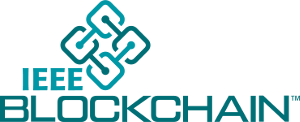IEEE Blockchain Technical Briefs - September 2018
A collection of short technical articles
Auto-translation of Regulatory Documents into Smart Contracts
By Olivia Choudhury; Murtaza Dhuliawala; Nicholas Fay; Nolan Rudolph; Issa Sylla; Noor Fairoza; Daniel Gruen; and Amar Das, IBM Research, Cambridge, MA
The evolution of Blockchain 2.0 expanded the scope of this emerging technology beyond cryptocurrency by introducing smart contracts. Although the notion of smart contract was conceived by Nick Szabo twenty years ago, it was first implemented on the Ethereum blockchain in 2014. Smart contracts are self-executing computer programs that implement a set of functionalities, based on business rules, to validate transactions in a blockchain network. Such rules are found in contractual agreements, and include, but are not limited to, defining and enforcing the terms of a contract between parties, keeping a strict and cohesive schedule of deadlines, and allowing change to the original rules, given the consent of the parties involved. Smart contracts can automate such complex business logic by embedding, verifying, and enforcing the contractual clauses of an agreement without intermediaries. However, the translation of business rules written for regulatory purposes to a smart contract specifying a blockchain transaction can be challenging and time consuming. Moreover, business rules are often re-used among different contracts, and redundant effort is needed to generate similar smart contracts.
Why Model-Driven Engineering Fits the Needs for Blockchain Application Development
By Qinghua Lu; Ingo Weber; and Mark Staples, Data61, CSIRO, Sydney, Australia
Blockchain has attracted a broad range of interests from start-ups, enterprises and governments. A large number of projects have been conducted to explore how to use blockchain to re-architect systems and to build new applications and business models. The application areas for blockchain are diverse, including digital currency, payments, trade finance, asset registry, identity management, and business processes.
However, building blockchain applications is challenging for developers. First, blockchain is a new technology with still limited tooling and documentation, so there can be a steep learning curve for developers. According to a survey by Gartner, 23% of [relevant surveyed] CIOs said that blockchain requires the newest skills for implementation at various application areas, while 18% said that blockchain technique itself is one of the most difficult. Second, the blockchain is by design an immutable record, so it is non-trivial or even infeasible to update the smart contracts. This can impede the way to fix bugs by releasing new versions of smart contracts. Mistakes in smart contracts have led to massive economic loss, such as the DAO exploit.
Trust Evaluation Based on Blockchain in Pervasive Social Networking
By Zheng Yan and Li Peng, Xidian University, China
In recent years, heterogeneous networks organized by the Internet, mobile cellular networks and self-organized Mobile Ad hoc Networks (MANETs) have received special attention due to their capabilities of establishing an instant communication platform for time-critical or mission-critical applications. As a concrete application example, Pervasive Social Networking (PSN) supports instant social activities anywhere and at any time in an intelligent and context-aware manner by switching among heterogeneous networks based on user demands.
Without any doubt, trust plays a crucial role in PSN since it assists decision making in social activities. But building up a real trust relationship and evaluating trust in a decentralized way are still not an easy task, especially among people located in different places without any face to face interactions and pre-established trust relationships. This issue becomes more serious and critical in PSN. Such a social network, different from online social networking, generally lacks a centralized party to help information collection, social data aggregation and trust/reputation generation.
A Pentagon of Considerations Towards More Secure Blockchains
By Qi Zhang, IBM Thomas J. Watson Research, Yorktown Heights, NY, USA; Reza M. Parizi, Department of Software Engineering and Game Development, Kennesaw State University, GA, USA; and Kim Kwang Raymond Choo, Department of Information Systems and Cyber Security, University of Texas at San Antonio, Texas, USA
With the rapid growing interest in cryptocurrencies such as Bitcoin and Ethereum, their underlying technology, blockchain, is catching huge amount of attentions from both academia and industries. More than a distributed database, blockchain is able to establish trust among multiple untrusted participants. This is achieved by using cryptographic techniques such as hash pointer, and consensus algorithms such as Proof of Work (PoW).
As a trusted platform, blockchain finds itself a good fit in many use cases, especially when multiple untrusted participants need to be involved. For example, Walmart is collaborating with IBM to use the blockchain (Hyperledger Fabric) to enable the safety, transparency, and efficiency of their food supply chain, in which the farmers, distributors, wholesalers, and etc. are involved. Also, many financial institutes are sitting together to actively explore using blockchain to facilitate the process of onboarding customers and to build faster inter-bank payment systems. In these cases, the use of the blockchain reduces the cost of having a third party to validate all the transactions, improves the traceability and auditability of the recorded data, thus makes the whole process more efficient.
2018-2020 IEEE Blockchain Technical Briefs Editorial Board
Subscribe to the IEEE Blockchain Technical Briefs
Join our Blockchain Technical Community and receive our Technical Briefs by email.
IEEE Blockchain Technical Briefs Editorial Board
Gora Datta, FHL7, SMIEEE, SMACM, Managing Editor
2024 Editorial Team
Justin Y. Shi, PhD, Editor-in-Chief
Boleslaw K. Szymanski, PhD
R.L. Shankar, PhD
Imran Bashir
Nicolae "Nicu" Goga, PhD
Constantin “Viorel” Marian, PhD
View the 2023 IEEE Blockchain Technical Briefs Editorial Board
View the 2022 IEEE Blockchain Technical Briefs Editorial Board
View the 2018-2020 IEEE Blockchain Technical Briefs Editorial Board
Past Issues
Read the top five most popular IEEE Blockchain Technical Briefs articles.
Read more (PDF, 731 KB)























